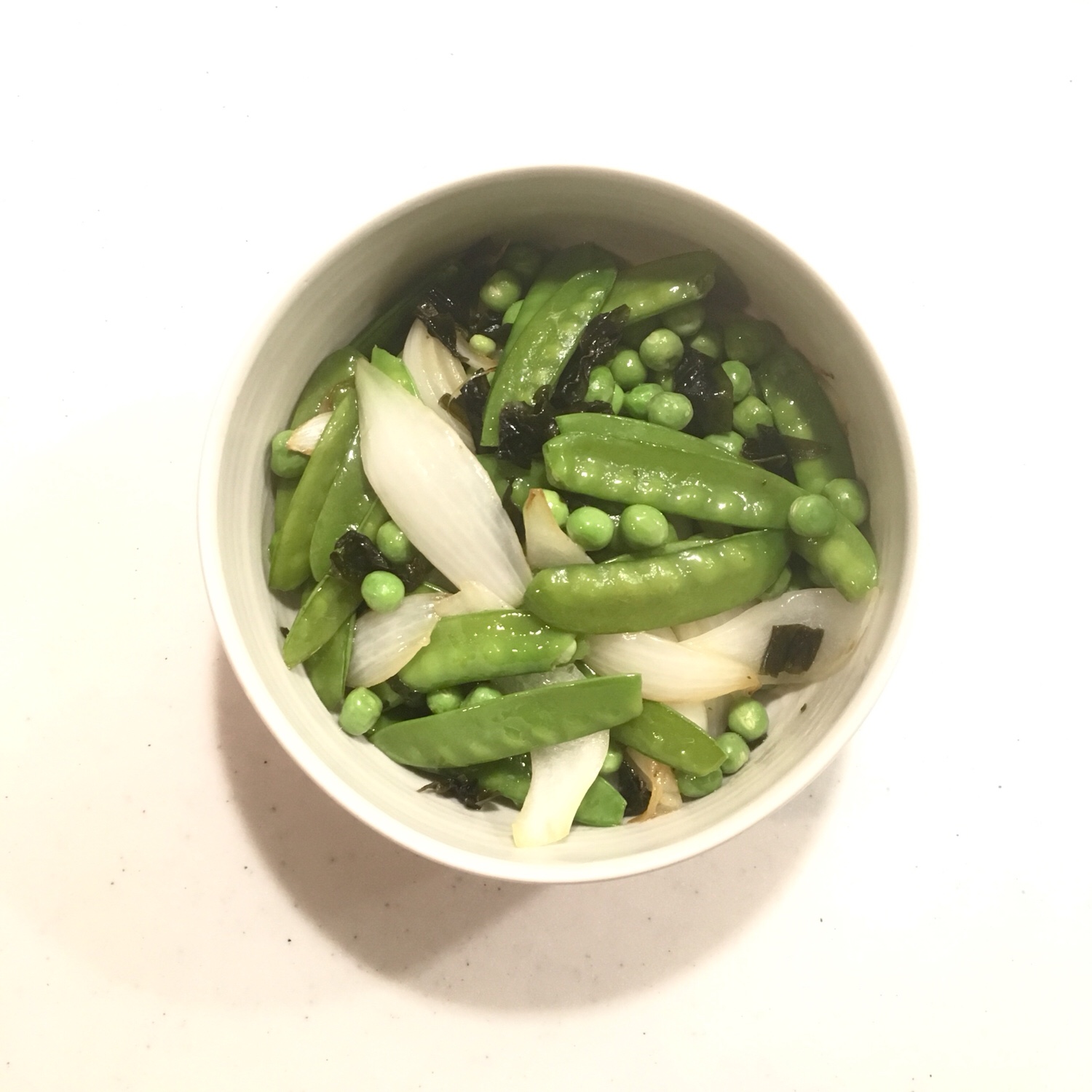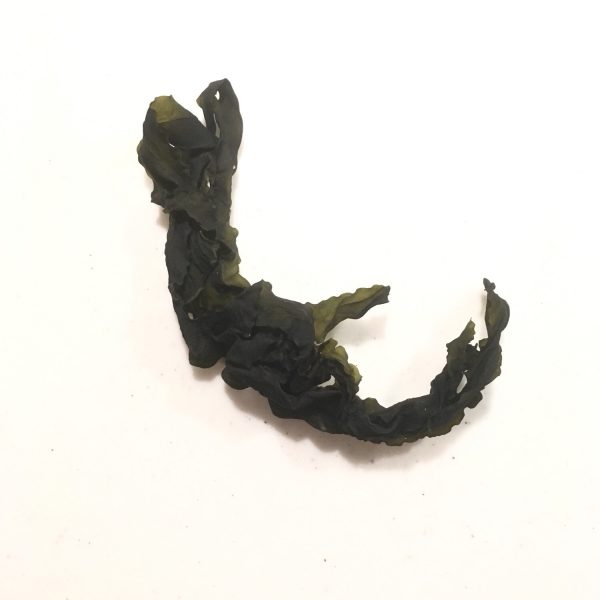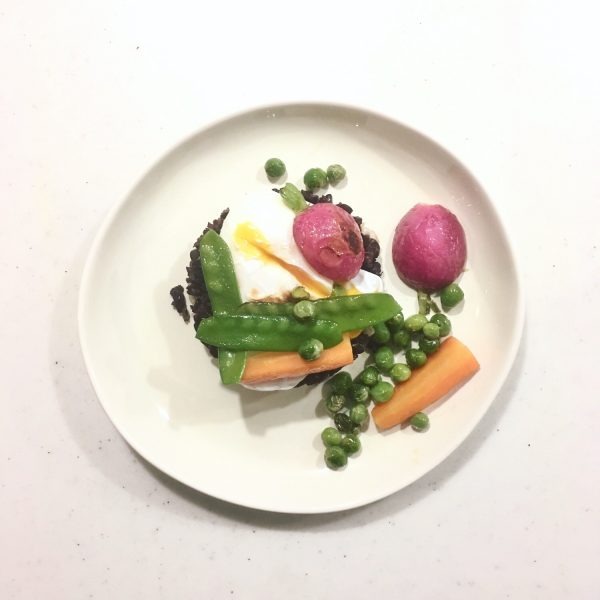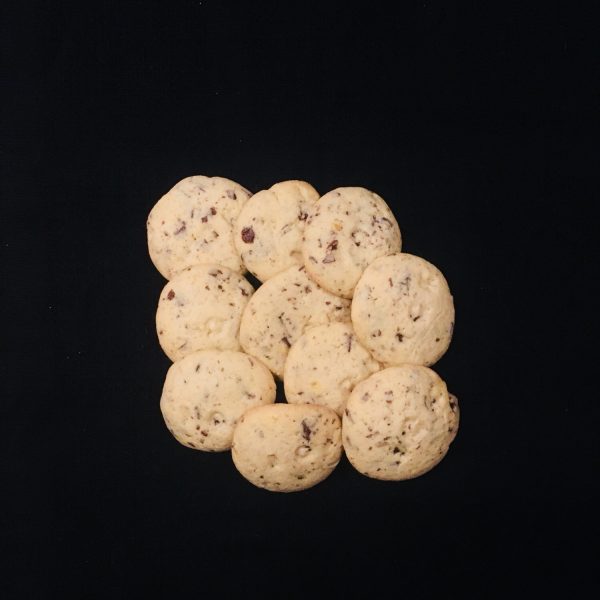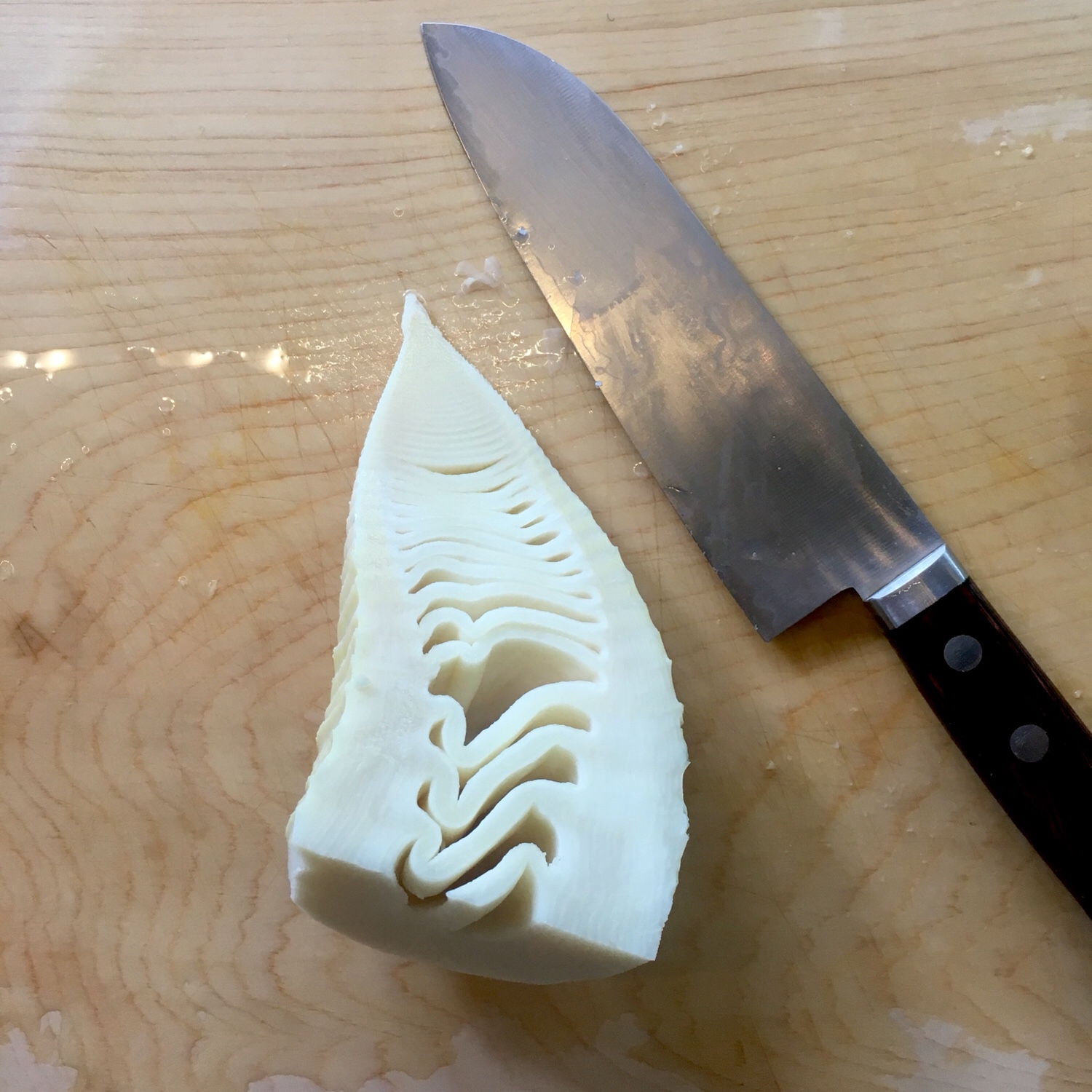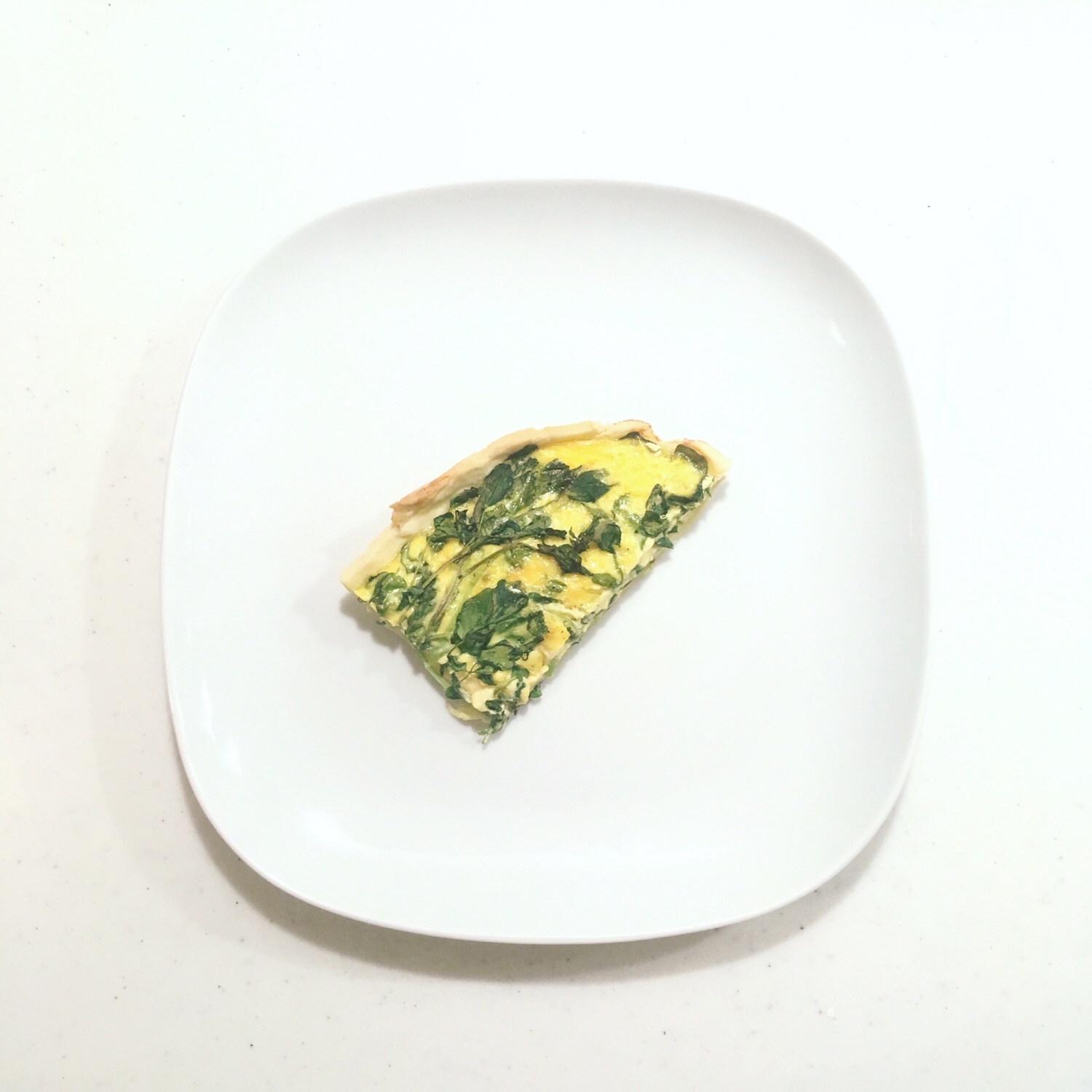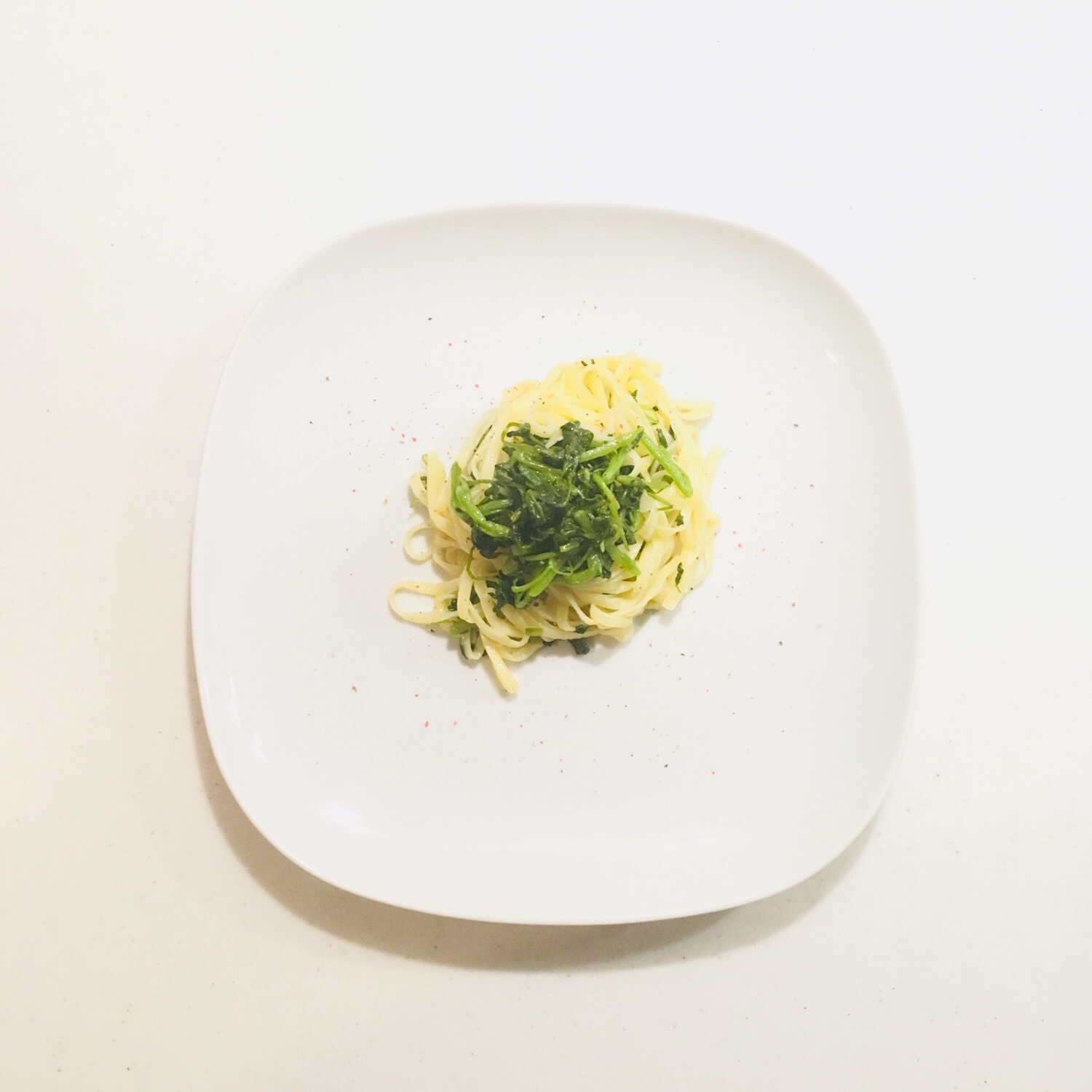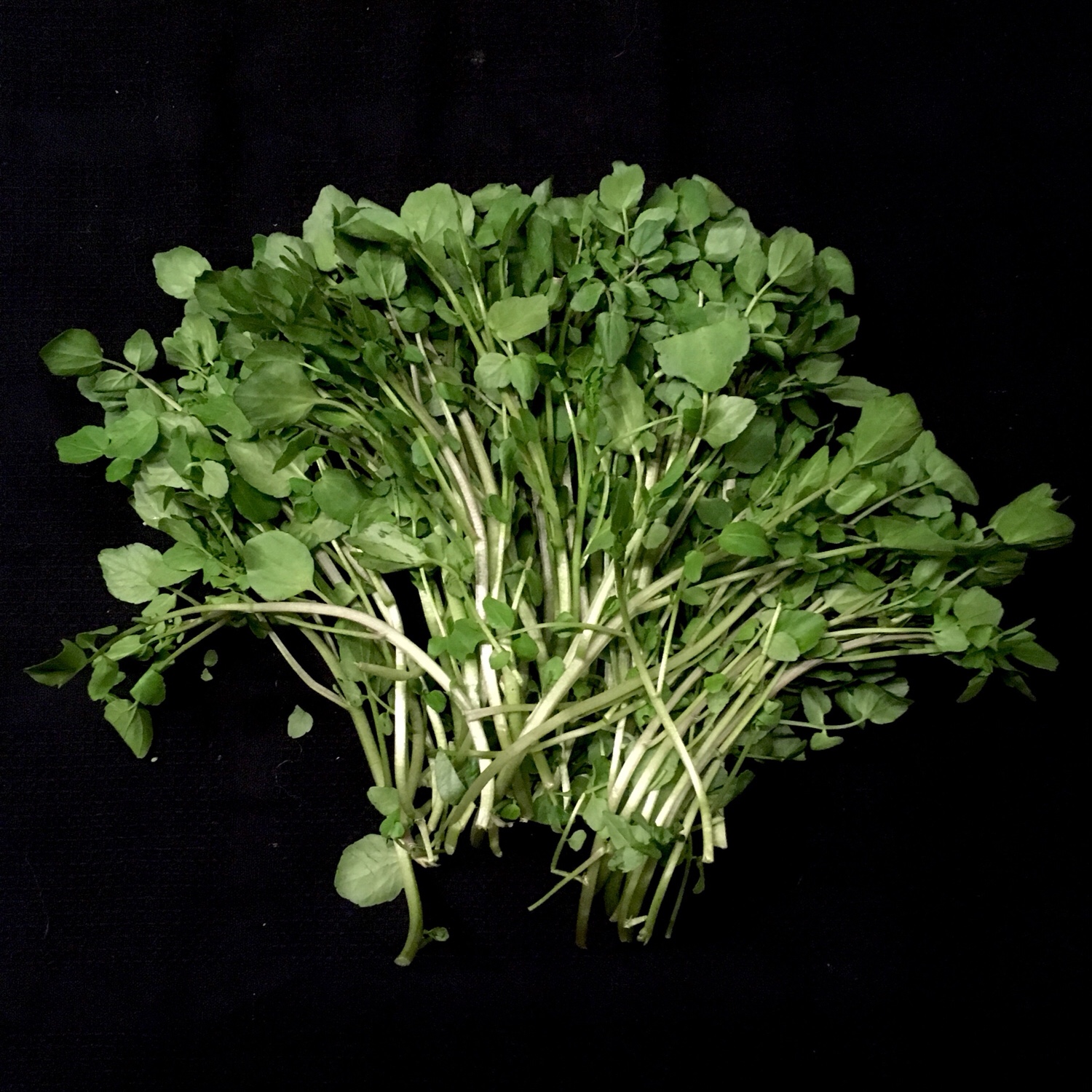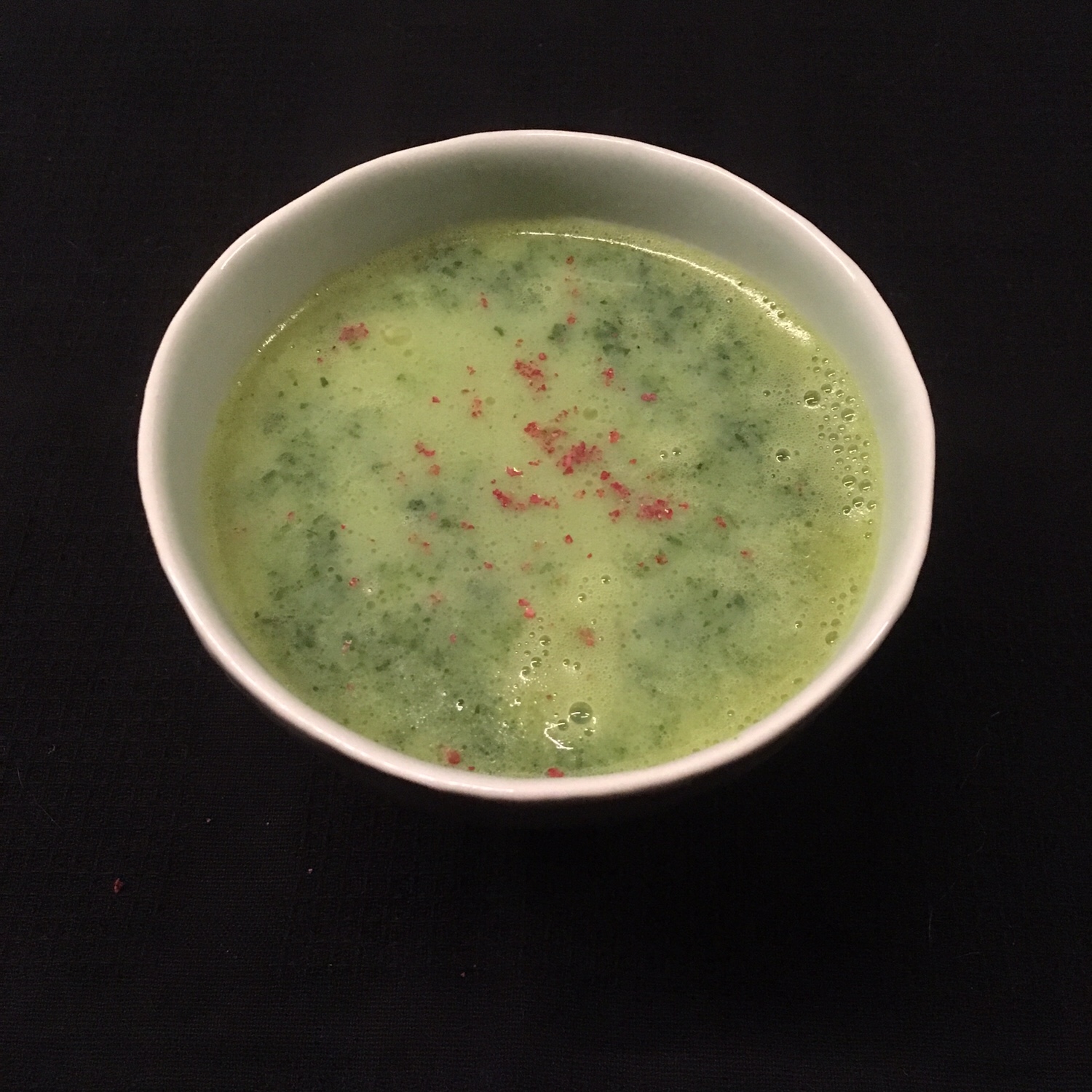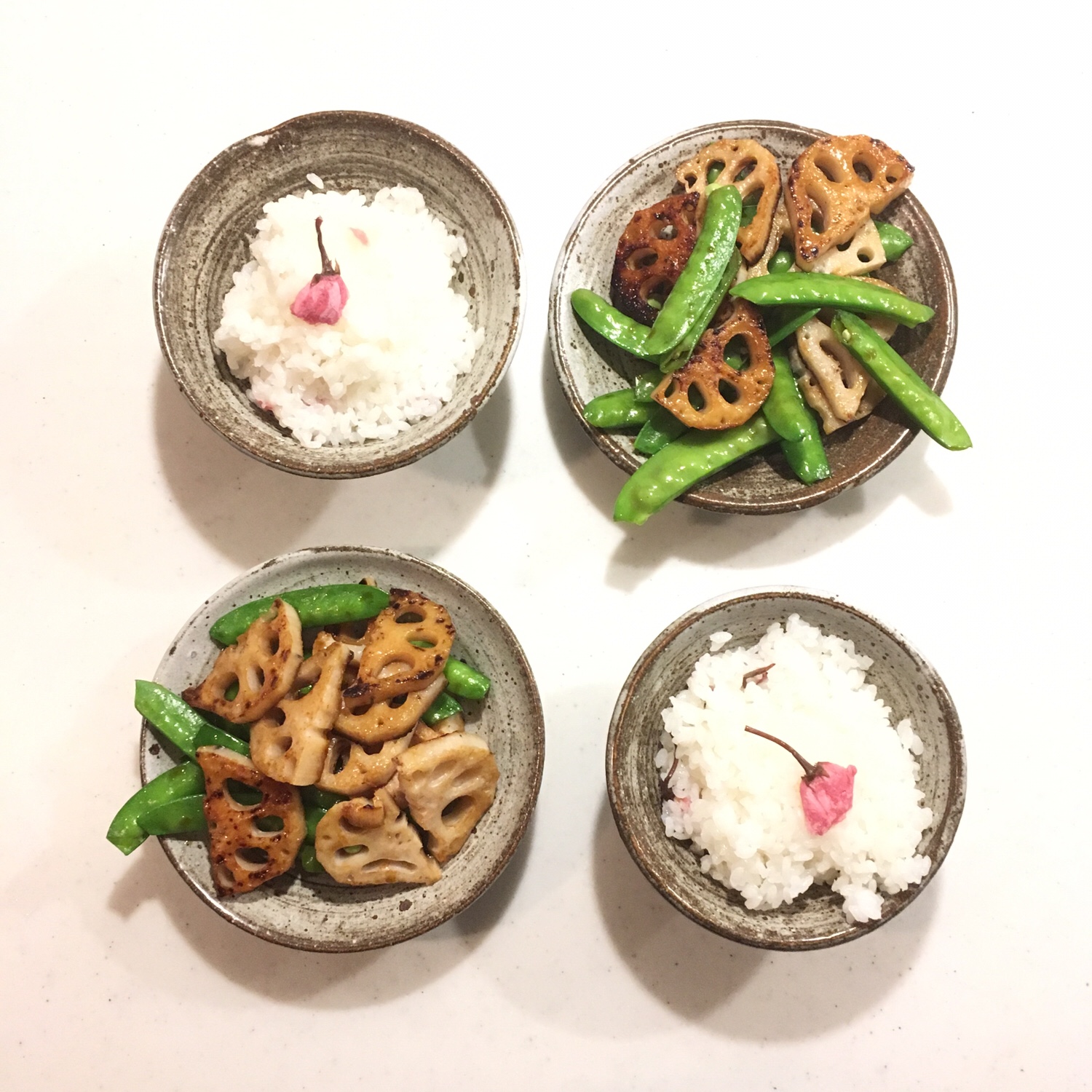There’s a season for everything and now is the season of new wakame apparently. This dried seaweed that is most often used in miso soup and in salad can be used in a variety of recipes I assumed and so I tried something half French half Japanese for this recipe. It all started with the finding of wild (should I mention) splendid alfonsino (kin me dai 金目鯛) that really attracted me, and some green peas (I’m a big big fan of green peas), that could complement the snap peas and new onion I had already. For the fish I simply grilled it on the skin side in a pan without any thing added, and flipped it when almost done to obtain a crispy outside. For the vegetables, that’s where the new wakame goes, I simply blanched the peas for 2min then drained them and in a pan with a bit of olive oil I grilled the onion and the added the wakame cut with scissors in small bits, and finished with the peas. Wakame, new or not is a dried seaweed, it needs a bit of moisture to return to its normal condition. The oil and the moisture from the onion and the peas is the perfect amount to keep it a little crunchy, too much moisture makes it quite chewy I find. Stir a bit and serve. No need to add salt, it’s already salty from the wakame.
Oh! I forgot! It’s the beginning of golden week in Japan! So happy golden week!!!